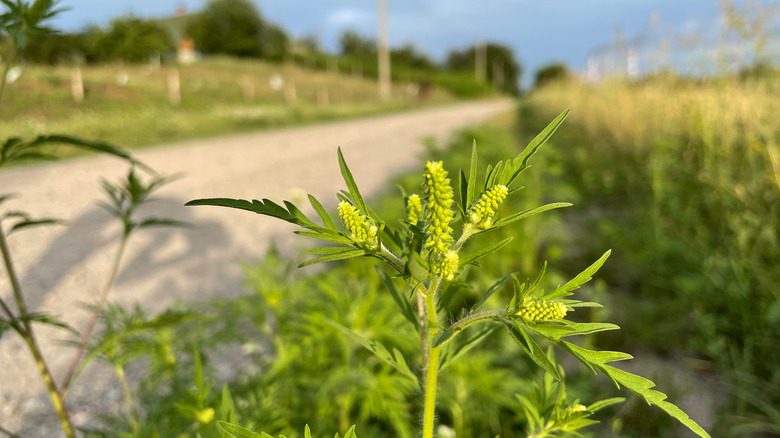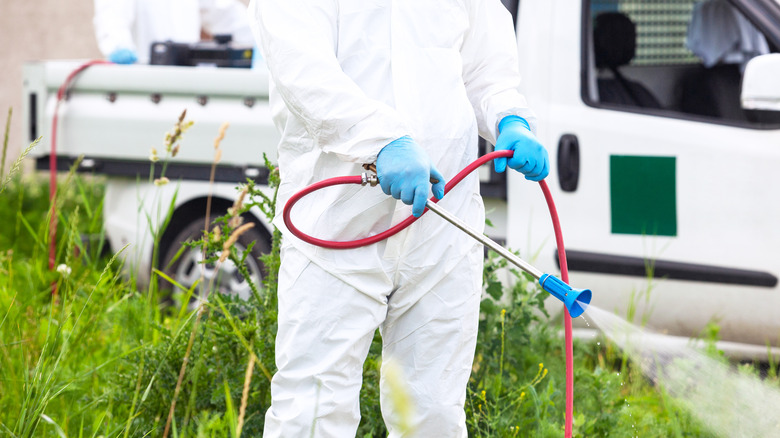When you’re dealing with ragweed, you’re contending with a garden weed that is a master of survival and rapid expansion. Understanding the biology and behavior of ragweed can empower you to formulate a highly effective management strategy. It isn’t merely a garden nuisance; it’s a formidable competitor that can quickly dominate your lawn and other vegetation. If left uncontrolled, this seemingly inconspicuous weed can multiply at an alarming rate. It capitalizes on any available patch of soil, greedily absorbing nutrients and sunlight, effectively suffocating your carefully selected plants and grasses. However, you’re far from defenseless in this botanical battle.
By taking a well-rounded approach to dealing with ragweed, you improve your odds of keeping your lawn free from this invasive weed. You also make your yard a better place for other plants you want. However, spotting ragweed early is crucial; the sooner you identify it, the better you can understand how it grows and spreads. You may act swiftly and efficiently with the help of this important knowledge, sparing yourself the headache of dealing with a bigger problem later on. The subsequent actions in your ragweed removal approach can be confidently taken if you’re certain you have a problem. With the correct knowledge, you can alter your lawn’s general maintenance practices to make it less inviting to ragweed. This can entail altering the amount of water you give your lawn, growing native plants that can outcompete ragweed, or adding mulch to help keep weeds at bay.
Identifying ragweed

When identifying ragweed, observe the leaves; they often display deep lobes that give them a fern-like appearance and feature greenish-yellow flowers. If you spot fine hairs on the plant, you’ve got another signature hallmark of ragweed, further confirming your suspicion. It’s also essential to note the plant’s potential size, as ragweed can vary significantly in stature. Depending on their particular variety, some ragweed plants can grow astonishingly tall, reaching heights up to 6 feet. Don’t underestimate this plant based on size alone; it’s a vigorous grower that can become a significant problem if left unchecked.
Now turn your attention to the flowers. They won’t dazzle you with vibrant colors or enchant you with their fragrance. In fact, ragweed flowers are remarkably inconspicuous. Yet their modest appearance belies a staggering capacity for pollen production. Believe it or not, a single ragweed plant can churn out up to 1 billion pollen grains in one season. Nature has engineered these flowers for wind pollination, enabling these tiny grains to disperse far and wide. This is particularly concerning if you or your loved ones suffer from allergies, as ragweed pollen is a common allergen.
Action plan: eradicating and preventing ragweed

Armed with the ability to identify ragweed, you’re now in a strong position to tackle this invasive weed head-on. Maintaining a healthy lawn is the first way to keep ragweed at bay. A regimen of regular mowing, proper fertilization, and adequate watering creates a lawn environment where it’s difficult for ragweed to gain a foothold. If you’re facing a more extensive ragweed problem, chemical treatment might be necessary. In such cases, opt for selective weed killers that specifically target ragweed without causing harm to your lawn grass. But beware that many commonly used herbicides prove ineffective against the tenacious common ragweed, making it a particularly challenging adversary in your battle for a weed-free lawn or garden. It’s crucial to take time when choosing a weed killer and carefully read the manufacturer’s guidelines to understand proper application rates and safety precautions. Herbicides are a potent tool but should be used judiciously and responsibly.
Mulching can serve as a preventive measure. Applying a layer of organic mulch can effectively block sunlight from reaching the soil, making it difficult for ragweed seeds to germinate. Mulch serves the dual purpose of enriching your soil and acting as a physical barrier to weed growth. Seasonal monitoring is equally important. Keep a vigilant eye on your lawn, particularly during ragweed’s peak growing season. The earlier you spot it, the easier it will be to contain and eradicate. Early removal can thwart a minor issue from turning into a full-blown infestation.



